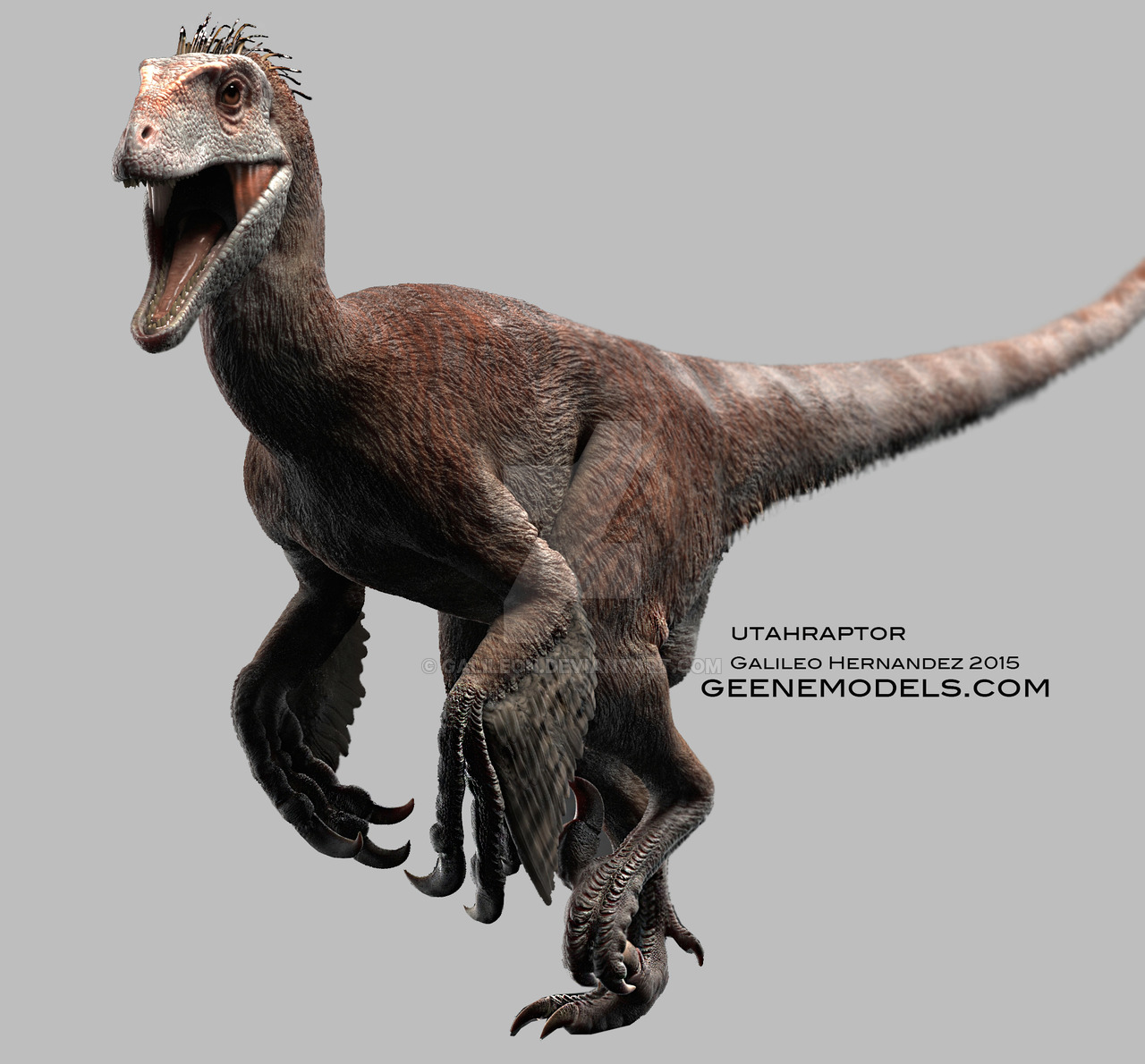Dinosaur Revelation : Mystery of North American Giants
Dinosaurs Forum Topic

Elite Raptor 007
MemberCompsognathusApr 21, 20141684 Views4 RepliesNorth America, most of you think that this contiment is the land where everything was Big, well.... 65 Milion Years Ago, this place was No Diffrient

WESTERN North America during the Late Cretaceous was a land of giant dinosaurs. In recent years, this simple observation has led scientists to wonder how an area just one fifth of the size of present day North America could support two distinct communities – both of which hosted as many big beasts as the whole of modern-day Africa.
Beginning in the 1960s, palaeontologists noticed that Late Cretaceous dinosaurs discovered in more northerly regions of North America (predominantly Montana and Alberta) differed from those found in more southerly areas (mostly New Mexico and Texas).
The same major groups of dinosaurs were found in northern and southern parts of the continent: plant-eaters like duck-billed hadrosaurs, horned ceratopsians, and armoured ankylosaurs, together with giant predatory tyrannosaurs and a variety of much smaller ‘raptor-like’ carnivores.
But, within those groups, the dinosaurs of north and south were quite different from each other. For example, Pentaceratops is a long-frilled ceratopsian dinosaur known mostly from New Mexico, whereas its relative Chasmosaurus (pictured above being chased by Daspletosaurus in a still from Planet Dinosaur) is restricted to the north.
Over the past four decades, evidence for distinct, co-existing dinosaur communities in the Western Interior of North America has continued to grow. For much of that time, however, many more fossils were known from the north than from the south, raising suspicions that the apparent differences resulted from poor sampling rather than ancient biology.
Since 2000, I have led a multi-institutional project in southern Utah’s Grand Staircase-Escalante National Monument. The team’s discoveries include many new kinds of dinosaurs, such as Nasutoceratops, a remarkable ceratopsian with exceptionally long brow horns, and Kosmoceratops (my personal favorite), with a mind-blowing 15 horns arrayed over the nose, eyes, and bony frill. The collection also features previously unknown varieties of hadrosaurs, tyrannosaurs, ankylosaurs, and ‘raptors’.
Together, these well-dated findings demonstrate that distinct assemblages of dinosaurs did indeed co-exist on North America for at least a million years of Late Cretaceous time around 76 million years ago. Each of these latitudinally arrayed communities, separated by only about 1,000 miles, appears to have hosted at least 16 varieties of dinosaurs, half a dozen or so of which fell into the massive, rhino-to-elephant size range (say, more than a 1,000 kilograms).
By comparison, today the entire continent of Africa is home to only about half a dozen kinds of such oversized beasts (giraffe, hippo, and two kinds each of rhinos and elephants).
The mystery deepens when we consider Late Cretaceous geography. For 25 million years (95-70 million years ago), hothouse climates and elevated sea levels generated a shallow sea that stretched from the Arctic Ocean to the Gulf of Mexico, dividing North America into eastern and western landmasses.

The fossil-rich rocks referred to above were deposited on the western landmass, known as Laramidia. So the distinct dinosaur communities co-existed on a chunk of real estate less than one-fifth the size of present-day North America!
How were so many kinds of giants able to co-exist on such a small landmass? One possibility is that big dinosaurs didn’t eat as much as similarly sized mammals. This explanation would apply if dinosaurs possessed slower, more efficient and less demanding metabolisms, more akin to cold-blooded crocodiles than to warm-blooded mammals.
Another possible explanation is that plant food in at least some areas was much more abundant during the Late Cretaceous than it is today, supporting more (and more kinds of) huge herbivores, which in turn sustained a greater diversity of carnivores.
We don’t yet know which, if either, of these hypotheses best explains the resounding success of Laramidian dinosaurs, arguably the most diverse assemblage known for any continent-scale region during the entire Mesozoic Era. Solving this mystery once and for all will require larger samples and more analysis.
But if I had to bet, my strong hunch is that both hypotheses will prove to be accurate. To my mind at least, the debate over dinosaur physiologies seems to rule out the cold-blooded and warm-blooded extremes, suggesting that the bulk of dinosaurs were characterised by intermediate metabolic rates - not too hot, not too cold, but just right.
And the work we’ve been doing in southern Utah is consistent with the notion of exceptionally high diversities of both plants and animals.
Who knows? Perhaps ecology and evolution operate distinctly differently when Earth is in a hothouse mode (the norm in our planet’s history). We don’t know yet, but paleontologists are sure going to have fun figuring out the answer!
Replies to Dinosaur Revelation : Mystery of North American Giants
Hey Guest, want to add your say?
Are you an avid Jurassic World fan looking for a dedicated online community of likeminded fans? Look no further! Create your own profile today and take part in our forums and gain XP points for all the content you post!











